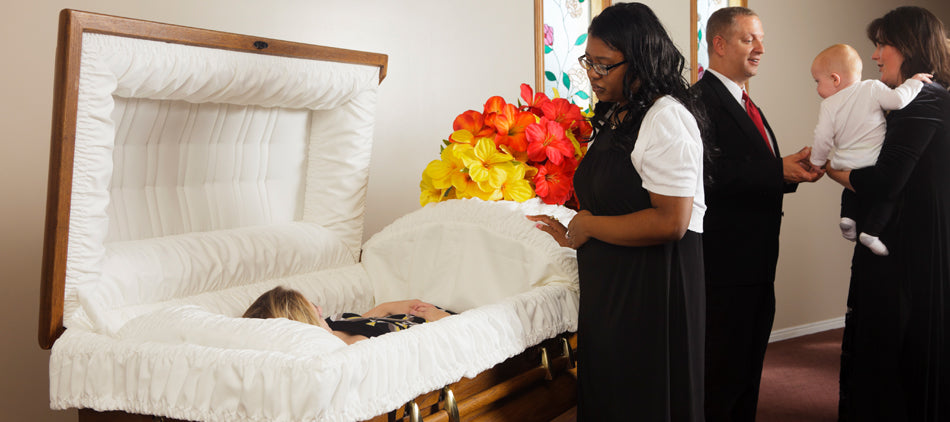
Embalming
For families planning a public visitation, embalming is recommended. The process of embalming is considered to be the most successful practice of preparation for the viewing of a loved one’s body.
By definition, embalming is “the process of chemically treating the deceased human body to reduce the presence and growth of microorganisms, delay organic decomposition and restore an acceptable physical appearance.” A loved one’s physical appearance is an important part of what makes a viewing/visitation a meaningful experience for all who attend.
Your loved one’s body is the most important symbol present during a viewing/visitation. The process of embalming – and sometimes further efforts through reconstruction – promotes a more natural look and a healing final impression of your loved one.
Viewings, Visitations and Funerals
Honoring and remembering a loved one’s life is an important part of the healing journey. Regardless of what a family decides for a loved one’s final resting place, a meaningful event to say goodbye can be beneficial, whether it is in a private setting or with extended family and friends. The opportunity to spend final time with a loved one will help those who are grieving acknowledge the reality of the death and receive caring support from others. Our funeral home is committed to helping families plan a fitting tribute honoring a loved one’s life.
Honoring and Remembering a Loved One
Many families that decide to commemorate their loved one’s life, sharing their fondest memories and allowing others to share memories as well, will choose to have a visitation with their loved one’s body present. A visitation allows family and friends to reflect on how the loved one affected their life and encourages the sharing of stories. Viewing a loved one’s body during this time may evoke strong emotions. Saying goodbye and expressing those emotions in a convenient setting surrounded by others who share feelings of sadness is part of a healthy grieving process.
Is embalming required by law?
Generally, embalming is not required by law. However, many states require that a body be either embalmed or refrigerated within a certain time period after death has occurred. The funeral home or cemetery may also have an embalming requirement for certain types of arrangements, such as when there will be a public viewing of the deceased. You always have the option to select alternative arrangements that do not require embalming.
Should everyone be embalmed?
There are important considerations unique to each family that affect end-of-life service decisions following the death of a loved one. Your family’s funeral director will explain the choices for funeral services and/or memorial events and when embalming would be beneficial to create a suitable physical appearance.
What if my loved one experienced extreme trauma?
It is often assumed that extreme trauma precludes the viewing of the deceased. Depending on the circumstances, reconstruction and/or restorative procedures may be necessary in order to achieve a more natural and acceptable appearance suitable for viewing. After a careful evaluation of the human remains by a licensed embalmer, both the funeral director and embalmer can help determine the best course of action to restore the deceased’s physical appearance.
What are some circumstances in which embalming is optional?
- Cremation with no viewing
- Private family viewing
- Immediate burial with no viewing
- Identification of human remains
- Religious beliefs that prohibit embalming
What are some circumstances in which embalming should be performed?
Embalming is recommended when a public viewing/visitation is selected. The embalming process not only helps maintain a suitable appearance but allows those planning the funeral or memorial to have some flexibility in scheduling the event.
Who makes the decision as to whether a person is embalmed?
The person who holds the right of disposition under state law is the person who authorizes embalming. Typically, if embalming has not been authorized by the decedent in a preneed contract or other directions that are binding under state law, the survivor who holds the right to arrange the funeral under state law will decide whether the remains are to be embalmed.
How much does it cost to embalm a body?
The cost for embalming varies among funeral homes. Additional costs may apply if reconstruction and/or restorative procedures are necessary.
What happens if a body is not embalmed?
If a body is not embalmed or kept in a climate-controlled environment, the process of decomposition begins. Decomposition is most evident though odor, physical changes to the body and/or discoloration.
How long does an embalmed body last?
Even though the embalming process delays decomposition, it does not stop this natural process. Other determining factors such as environmental conditions and the manner in which someone died can directly affect the condition of the human remains.